Derived from the PT-76
The BTR-50 for "BroneTranspoRter" (Бронетранспортер) answered to a specification for an amphibious, tracked APC, at a time were the two wheeled APCs in service, the BTR-40 and the BTR-152 lacked good off-road capabilities and were only unable to ford small rivers. The same design bureau responsible for the PT-76 light tank, the Leningrad ChTz factory complex (Chelyabinsk) VNII-100 institute, proposed a variant of this vehicle which had the required characteristics, and after initial trials of the Ob'yekt 750 prototypes between 1952 and 1954, it was eventually accepted into service and the production started in 1954.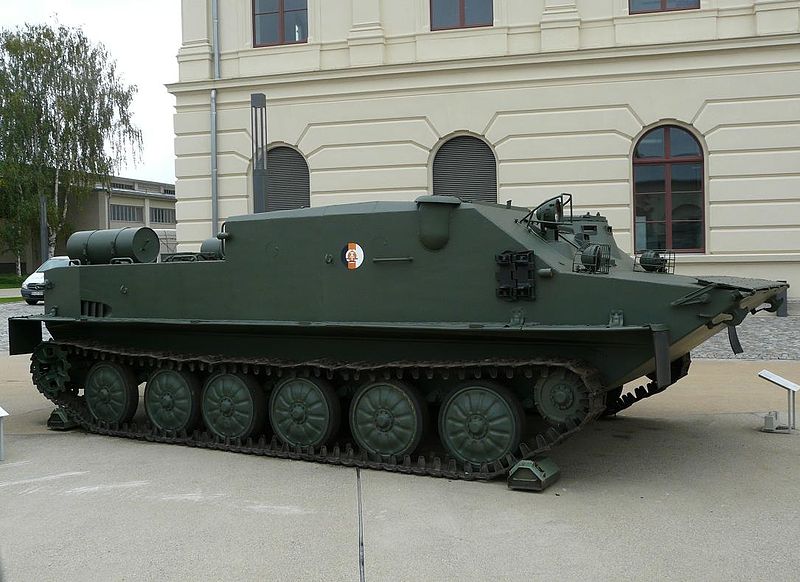
Ex-East German BTR-50PK now displayed at the National DDR Volksarmee.
Design of the BTR-50
The two vehicles obviously shared the same chassis, drivetrain, engine and transmission, the same innovative water-jet design system at the rear and boat-liked all-welded steel hull which was flat and quite wide, to provide the required buoyancy without the need of extra floaters. However, the upper part was heavily modified. Exit the central turret, replaced by a massive welded superstructure which ran from the front glacis to approximately the middle of the hull.The RHA armor was 13 mm to the front, 10 mm sides and 7 mm top and rear protecting against small arms fire and shell fragments. The folded trim vane acted as an extra front protection. Until the BTR-50PK variant, the BTR-50 was not treated NBC. The crew was in the front and just behind were located the troops, while the engine compartment started right after the end of the superstructure at the rear. Up to twenty fully equipped infantrymen could sit on benches which run across the full width of their compartment, in open air. Access and exit were provided simply by climbing over the sides of the hull. They could fire on the move through two pistol ports on either side, and one could operate the pintle-mounted machine-gun, installed on the roof right side right after the driving compartment.
At the front, the driver was located in the center, seeing through three vision blocks and periscopes located on top of the glacis plate. The center periscope was exchanged for a TVN-28 night vision device with a range of 60 meters for night operations. He also had an IR driving light and IR searchlight. He could access and exit through a small access hatch opening upwards, which could be used to drive in relatively safe areas. In combat, he relied on a vision block. He also had an emergency hatch under his seat.
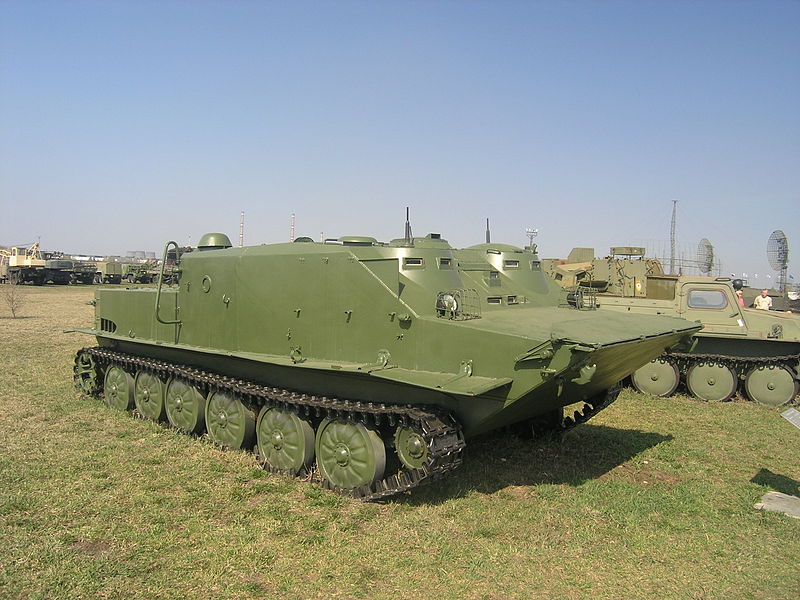
BTR-50PU at the technical museum of Togliatti in Russia.
The commander sat on the left-hand side could see through three vision blocks and periscopes. He also had a projecting bay plus a cupola equipped with a single vision block located on top. The cupola opened forward. The hull was made watertight and it was serviceable (and tested) to operate in extremes of -40 °C and +40 °C. While these were vehicles were unarmed, optional armament comprised a single 7.62 mm SGMB medium machine gun with 1,250 rounds (BTR-50P and PK), or a 14.5 mm KPV heavy machine gun (BTR-50PA). However, the early BTR-50P were equipped with folding ramps to allow a 57 mm ZiS-2, a 76.2 mm ZiS-3 or an 85 mm D-44 anti-tank gun to be loaded and fired from the engine decks. This caused considerable stress for the hull, and the low muzzle meant toxic fumes could penetrate the troop compartment and the noise was deafening. Tests were also performed with a more specialized artillery en portee vehicle.
The torsion bar suspension was identical to the PT-76 with six evenly spaced, large hollow rubber-tired road wheels. The drive sprocket was at the rear and idler at the front and no track-return rollers. The first and last roadwheels received in addition to their torsion arms, hydraulic shock absorbers. The steel tracks, single pin, counted 96 links each. A thin horizontal skirt protected them to some extent. The powerplant was also identical with a 6-cylinder in Vee, 4-stroke inline water-cooled diesel which gave 240 hp (179 kW) at 1800 rpm. Road speed was established to be of 44 km/h and the cruising range of 400 km. Tests also showed capabilities to climb 30° side slopes, 60° gradients, cross 1.1 m high vertical obstacles and up to 2.8 m wide trenches. The engine cooling system had a pre-heater to start in extremely low temperatures.
The manual shaft-type transmission was a 5-gears (4 fowards/1 reverse) similar to the T-34/85 system. The side clutch helped the driver for turning, assisted by a mechanical transmission and a band-brake. The engine was fed by three fuel tanks, two on the front right of the engine compartment, one at the rear for a total of 400 liters. Four mounts could hold additional external fuel tanks at the rear, like on the PT-76, flat and drum-type.
The BTR-50 can swim after switching on the two electric bilge pumps (with a backup manual bilge pump for emergency) and erecting the trim vane. The latter improved the stability when swimming and prevented water from flooding over the bow. The driver's swimming periscope which could be swapped enabled the driver to see over the trim vane. The two hydrojets had inlets under the hull and outlets at the rear. Assistant water-jet inlets were also located on both sides to help to maneuver, thanks to lids that can be fully or partially closed. The freeboard was 15 to 20 cm but there was no snorkel so that the vehicle was mostly restricted to calm land water operations.
Soviet Variants of the BTR-50P
Production was held from 1954 to 1970 when it began to be sold or retired from service. Nowadays, Russia still had specialized 1,000 BTR-50PU, BTR-50PUM, MTP-1 and UR-67 currently in service while the original APCs are all gone. Basic variants counted artillery portee vehicles, and two modified with a second superstructure on top of the first, the Forward Air Control vehicle and the NBC reconnaissance vehicle.The BTR-50 PA (1954)
was given a new pintle mount for a heavier 14.5 mm KPV heavy machine gun.The BTR-50 PK (1958)
had a fully armored roof, fitted with two large rectangular hatches that open to either side and an extra rectangular roof hatch at the front of the roof. It was still not treated NBC but had two ventilators. Some received a single firing port on the sides instead of two. Soviet Marines vehicles had a longer nose and received a locator light in the center of the engine deck. This was an upgrade for most BTR-50s in the late 1950s.The UR-67
or ustanovka razminirovaniya was the mine-clearing vehicle, equipped either with a UR-67 x3 rocket launcher system with extra UZP-67 or UZR-3 explosive tubes stored inside the hull. This innovative system used rockets to tows the line charge, positioned by the vehicle crew and detonated to clear a pathway large enough for large vehicles to follow.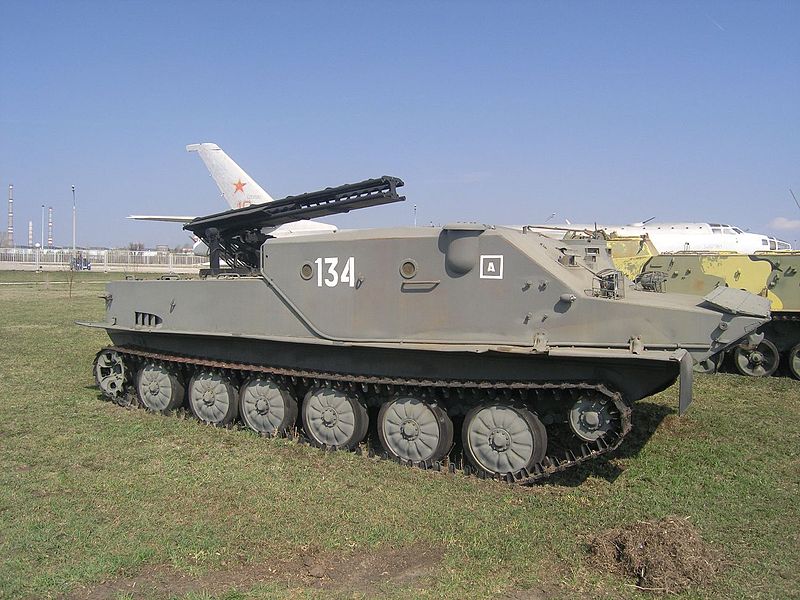
UR-67 at the Togliatii technical museum in Russia.
The BTR-50PN (1958)
is the command vehicle equipped with 3 radios (including an R-113) and 3 whip antennas.The BTR-50PU (1959)
is the other, mass-produced and best-known command vehicle with a crew of 10, an armored roof with oval hatches, 4 whip antennas. Most also had two projecting bays on the front. Known variants are the PU(1) and (2) with different front bays. The Czech OT-62 TOPAS is derived from this vehicle. There is also a marine version with a longer nose, the improved PU-2 with R-123 and the R-130M radios and a portable generator, the modernized PUM with a AMU telescopic antenna mast and R-123 (3x), R-130, R-326, R-405D and T-218 radios, and the PUM-2 with a reduced crew of 8 and the same equipment than in the BTR-60 R-145BM. Both versions were converted in 1972-1980.The MPTP-1
is the specialized ARV variant (for mashina tekhnicheskoj pomoshchi) with a raised compartment and light crane, used as a technical support vehicle.Prototypes
The main anti-aircraft variant tested were the ZPU-2 and 4 armed either with a twin ZPU-2 14.5 mm heavy machine guns (1,280 rounds) or quadruple ZPU-4 14.5 mm heavy machine guns (2,560 rounds).Warsaw Pact
Bulgaria:
Derived from the BTR-50PU the R-82, a command vehicle with different radios and collapsible AZI frame antenna. Bulgaria ordered 700 vehicles in 1959, delivered until 1963, now deactivated.Czech Republic/Poland
The joint Polish-Czech OT-62 TOPAS command version derived from the PK, which stands for Obrněný Transportér vzor 62 or "Armored Personnel Carrier model 62". The Czech army still has around 1200 vehicles in service, exported also to 13 other countries including Bulgaria, Angola, Egypt, India, Iran, Iraq, Libya, Morocco, Sudan, Syria...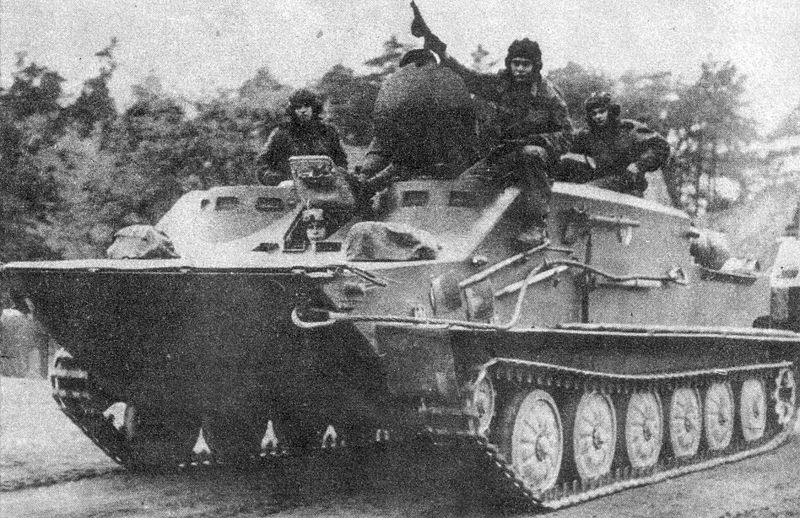 East German BTR-50PKTbiU
East German BTR-50PKTbiU
East Germany
Locally-produced versions are the basic SPW 50P (Schützenpanzerwagen), SPW 50PK, SPW 50PK(Akl) recce Version, SPW 50PK(D)/B for "Bergefahrzeug" bridgelayer & recovery vehicles, SPW 50PK(BBS) (Batteriebeobachtungsstelle) Observation vehicle, SPW 50PK(KM) (Kernmine) minesweeper engineers vehicle, SPW 50PK(LA) (Luftabwehr) command vehicle for air defense units, SPW 50PK(MRF) (Minenräumfahrzeug) mine-clearing vehicle, SPW 50PK(Pi) Command vehicle for combat engineers, SPW 50PK(S) Command and staff vehicle, SPW 50PK(UF) (Unterwasserfahrt) PGS-4 (Pioniergerätesatz) to prepare river crossings, SPW 50PU (command), and the SPW 50PU(A) Command vehicle of the divisional artillery. East Germany received 200 SPW-50Ps and SPW-50PKs until 1962, now all deactivated.Hungary
150 vehicles were ordered in 1959, delivered in 1960 and 20 BTR-50PU-IIs are currently in service.Poland
This country developed and produced together with Czechoslovakia the OT-62 TOPAS similar to the BTR-50PK but with hatches in the hull sides, more powerful PV-6 engine giving 300 hp (224 kW), two projecting bays in front of the superstructure instead of one (like the BTR-50PU), and in some versions, an extra 30 mm armed turret (2SAP). Both countries produced more than 2500 TOPAS-62s.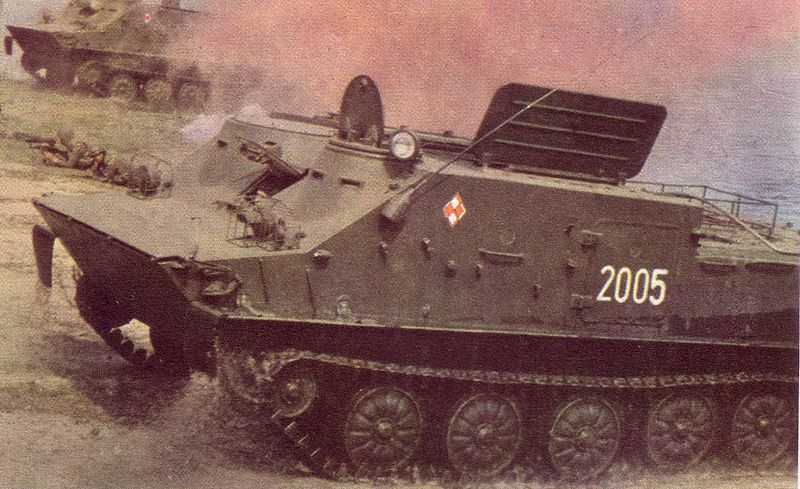 Polish TOPAS-62 in operations.
Polish TOPAS-62 in operations.
Romania
Operated also the BTR-50PU (command version), but all were retired in 1990.Yugoslavia:
217(131 BTR-50PU and 86 PK) were delivered from 1965 to 1976. Now Serbia and Slovenia operate the BTR-50PU, Croatia captured 26 BTR-50Ps during the war. Serbia also derived well-armed the BTR-50S (2005) for export (Turret of the M80 APC with a 30 mm cannon, one 7.62 mm Zastava M86 machine gun, two ATGM launchers (9M14 Malyutka) and four smoke grenade launchers.).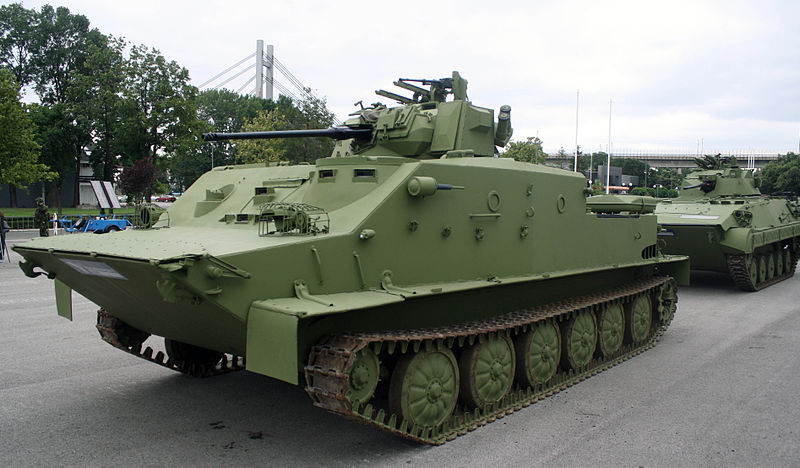 Modernized BTR-50S (by Yugoimport) at the Partner 2008 Military Fair.
Modernized BTR-50S (by Yugoimport) at the Partner 2008 Military Fair.
C.E.I (post-cold war)
Belarus
The BTR-50PKM (UTD-20 -300 hp engine, new steering and brake systems; and the MTP-300T Technical support vehicle.Ukraine
BTR-50PK ARV and the BTR-50M another BTR-50PK upgrade developed by Morozow. The latter features improvements in firepower and mobility, both of which can be carried out independently and a modular conception to fit the needs of customers. Armament is massively augmented, with a combination of 30 mm ZTM1 or 2A72 autocannon, one 7.62 mm KT or PKT coaxial machine gun, one 9K113 Konkurs ATGM and one 30 mm AGS-17 automatic grenade launcher. Final weight is 16.6/16.8 tons. Kevlar-type spall liner, navigation and climatized interiors are in options.Kazakhstan
Operated 300 BTR-50s and BTR-60s, still registered in service by 2005.Other operators
- Afghanistan: Ordered a total of 660 BTR-50Ps in total delivered from 1965 to 1988.
- Albania Still in service: 200 BTR-50s (and 150 Chinese Type 77s).
- Algeria 130 BTR-50s from 1977, Currently 30 BTR-50s and OT-62 TOPAS in service.
- Angola 92 ex-soviet ordered in 1975 and delivered in 1975.
- The Republic of Congo obtained three vehicles (date and type unknown).
- Cuba also obtained some vehicles (numbers, date and type unknown).
- Egypt: 500 ordered in 1964, 250 BTR-50PKs in service today, upgraded in 2014 to BTR-50PKM with a glassed cabin on top of the standard superstructure.
- Finland had 31 BTR-50PKs (1969-1970), now 70 BTR-50PUM1s and BTR-50YVIs in service.
- Guinea: 10 second hand, ex-soviet in 1981.
- India ordered 200 vehicles in 1977, delivered until 1979.
- Indonesia operates 70 vehicles today, of the BTR-50PM (palawa modification) for the Marines, the BTR-50PM and PAL-AFV (2008)
- Iran ordered 270 vehicles in 1966 along with 300 BTR-60Ps. 150 BTR-50s are in service today.
- Iraq ordered 250 vehicles in 1968, delivered until 1973. Developed the BTR-50P/PK SPAAGs. All now scrapped.
- Israel captured some Egyptian BTR-50 in 1967. Some modified, now withdrawn from service since 2002.
- Liberia purchased 8 vehicles in 1987, ex-Romanian.
- The South Lebanese Army received 20 vehicles from Israel, some used as improvised medevacs (1985-1986).
- Libya ordered 36 vehicles in 1969, 60 more in 1977. Still in service.
- Nicaragua: A single BTR-50PU was purchased in 1982.
- North Korea ordered 50 vehicles in 1966, apparently still in service.
- North Vietnam received 400 vehicles as aid from the Soviet Union (1969-1973) still partly in service.
- Somalia ordered 30 vehicles in 1971, ex-Soviet.
- Somaliland obtained 25 BTR-50Ps. No dated information.
- Sudan ordered 50 vehicles in 1968, ex-soviet service.
- Syria ordered 150 vehicles in 1966, 400 more in 1973. Apparently still in service.
- South Yemen ordered 100 vehicles in 1972, previously in Soviet service.
- Zimbabwe bought 40 vehicles from Syria in 1984.
The Chinese Type 77
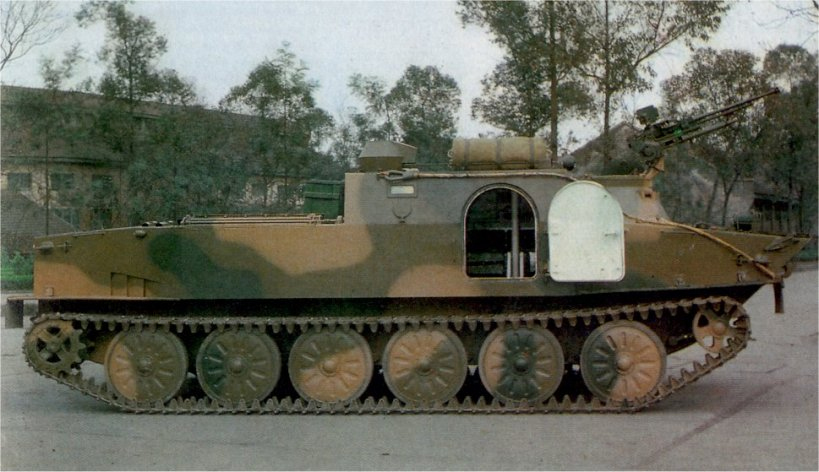 Contrary to the common opinion, the Chinese Type 77 is not a direct copy of the BTR-50P but is an APC based on the Type 63 amphibious tank, itself derived from the PT-76. It was produced by Norinco into the mid-1980s and entered service in 1978. The type 77 was apparently not exported and declined into four versions.
Contrary to the common opinion, the Chinese Type 77 is not a direct copy of the BTR-50P but is an APC based on the Type 63 amphibious tank, itself derived from the PT-76. It was produced by Norinco into the mid-1980s and entered service in 1978. The type 77 was apparently not exported and declined into four versions.
The BTR-50 in action
Due to a rugged construction, this reliable vehicle is still in service today, like most 1950s soviet vehicles. It appeared in service in 1954 but was first revealed to the public in 1957. The BTR-50 served in the motorized rifle regiments of tank divisions & mechanized brigades and soon was also operated by the East German armies. Three battalions had each thirty APCs and one command vehicle. The replacement came with the BMP-1 IFV in the 1970s, but Command vehicle variants were kept in service in many Warsaw Pact armies.Battle records include the used by Egypt and Syria during the Six-Day War in 1967, and some captured Israeli vehicles were re-used and during the War of Attrition (1968-1970), or at Operation "Raviv" (September 8–9, 1969) on the Suez canal raid. BTR-50s were again committed during the Yom Kippur War in 1973 which saw further captures of BTR-50s on the Israeli side. Some later transferred to the South Lebanon Army saw action in 1984-86.
Related links
The BTR-50 on Wikipedia
BTR-50 specifications |
|
| Dimensions (L-w-h) | 7.08 x 3.14 x 2.03 m |
| Total weight, battle ready | 14.5 Tons (18 000 lbs) |
| Crew | 2 (driver, commander) +10 infantrymen |
| Propulsion | V-6 diesel 240 hp (179 kW)@1,800 rpm, P/w 16.6 hp/t |
| Speed (land/water) | 44 km/h/11 km/h (27 mph/xx mph) |
| Range (road/off road) | 400 km for 400 liters |
| Armament | 1x DTM 7.62 mm LMG or Heavy 12.7 mm PKT HMG - see notes. |
| Armor | 7 to 13 mm front (0.3-0.5 in) |
| Total production | Approx. 6 000 |
Renditions
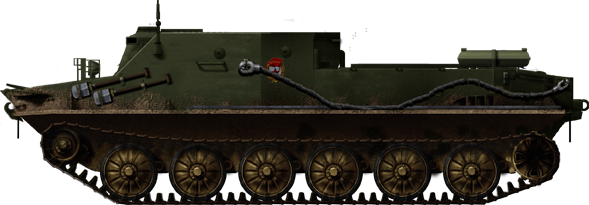
Soviet BTR-50P, the first version, with an open air compartment for the troops (1954).
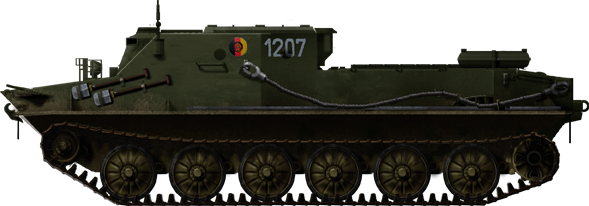
East German BTR-50PK, the standard enclosed version (1958).
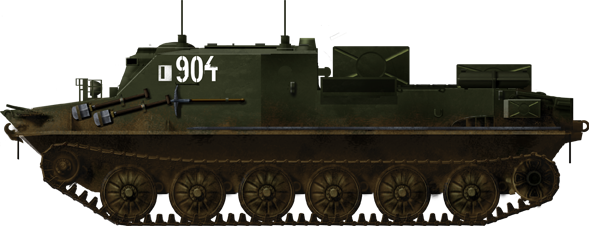
Hungarian BTR-50PU (1959), the second command version.

Soviet marines BTR-50PK in the 1970s.
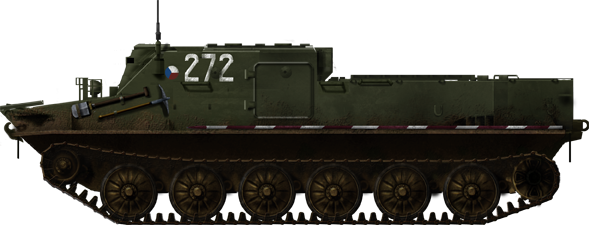
Czech TOPAS-62 in the 1960s
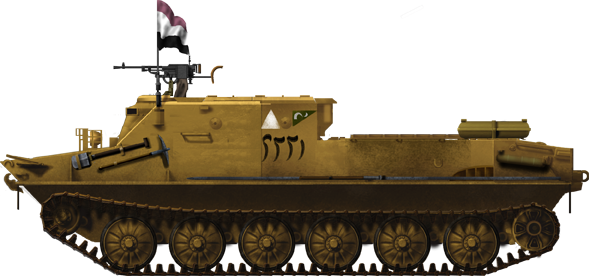
Iraqi BTR-50PK, Iran-Iraq war of 1985-87.
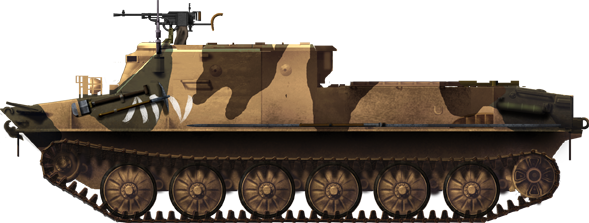
Egyptian BTR-50PK, war of 1967.
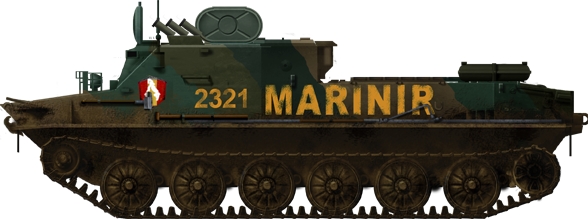
Indonesian Marines BTR-50PK, with some modifications like the smoke dischargers.
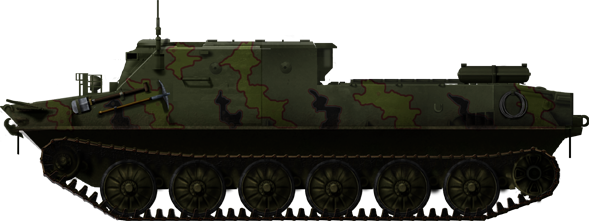
Croatian BTR-50PK.
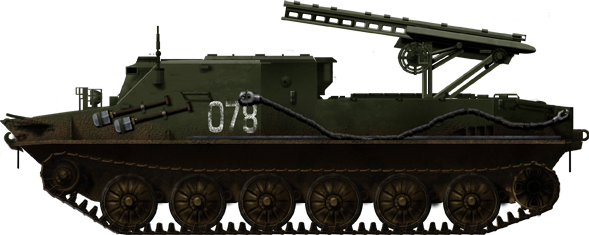
Soviet UT-67 rocket-assisted mine-clearing vehicle.
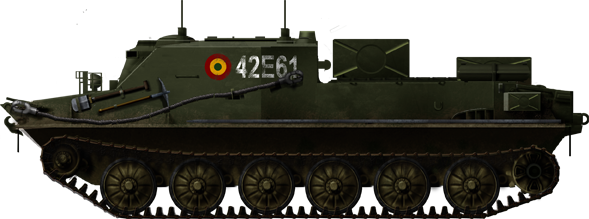
Romanian BTR-50PU.
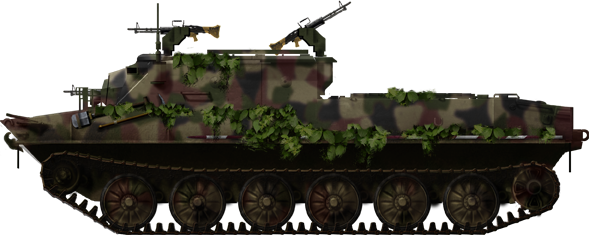
Cuban or Nicaraguaian? BTR-50PK modified with a ball-mounted and two pintle-mounted LMGs.
Gallery
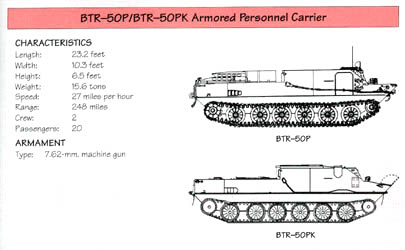
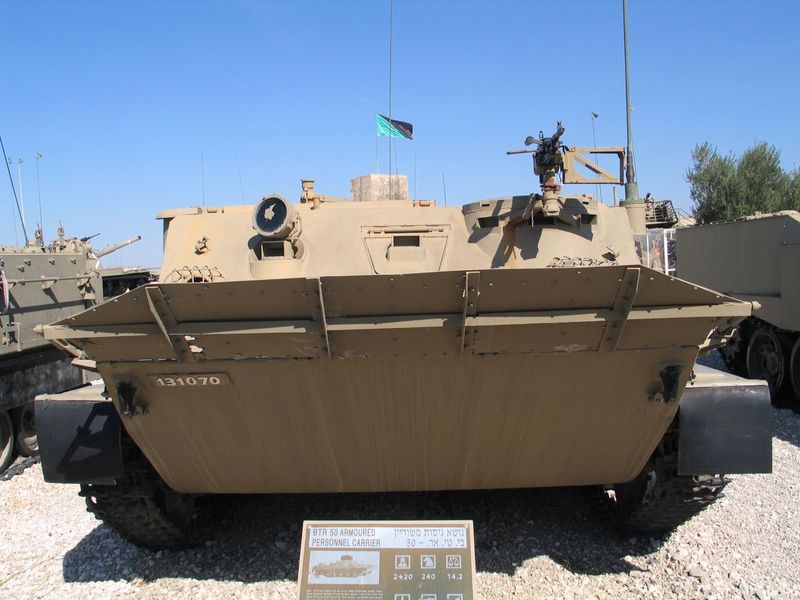
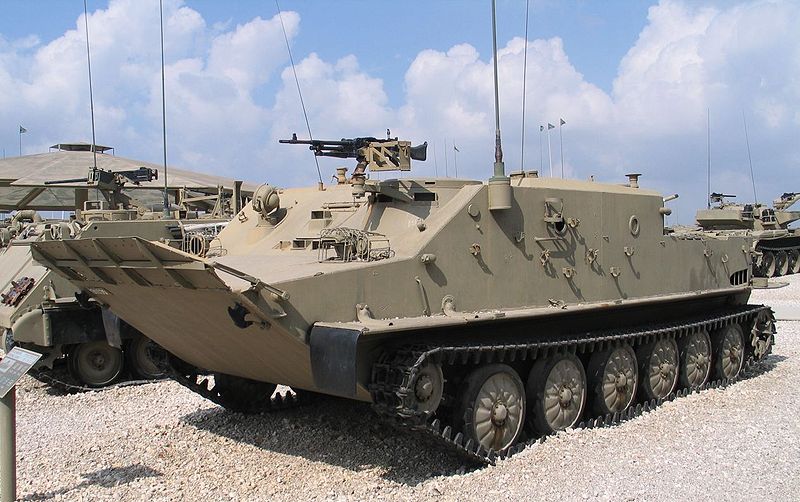
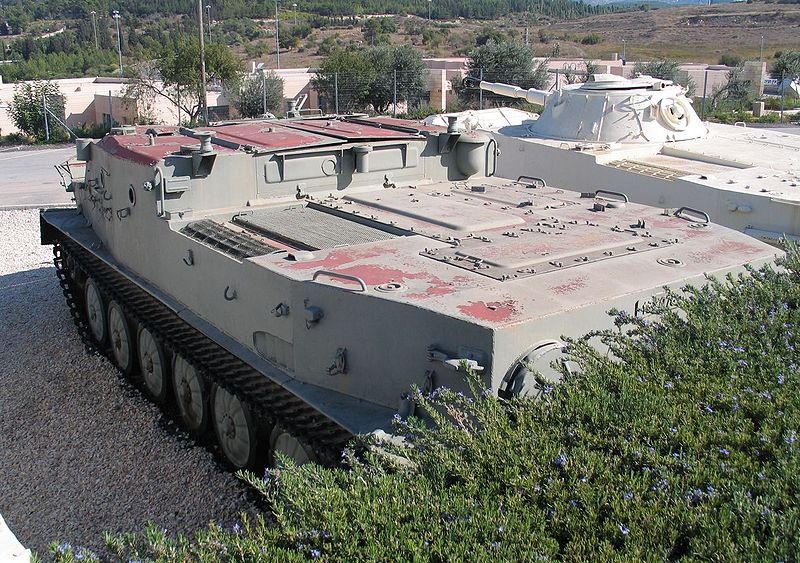
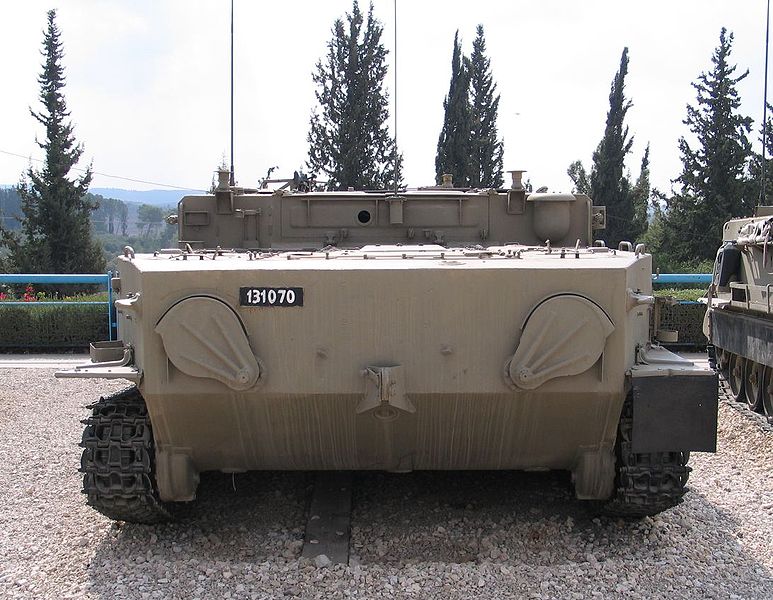
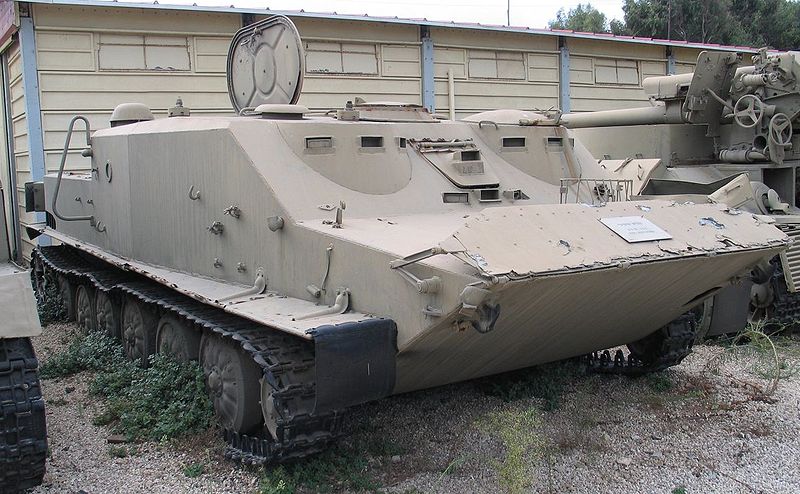
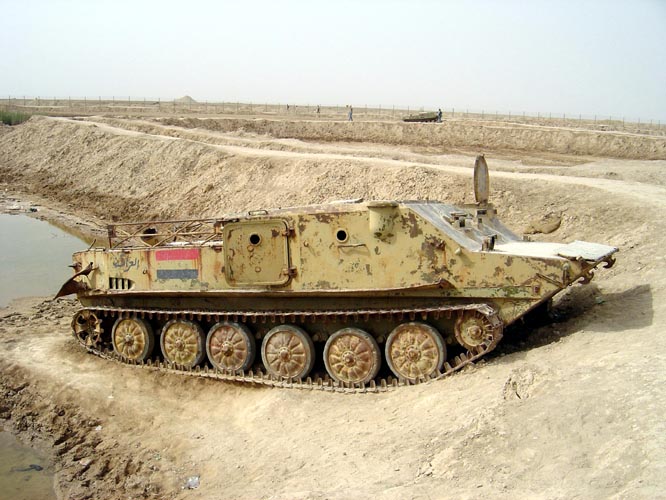
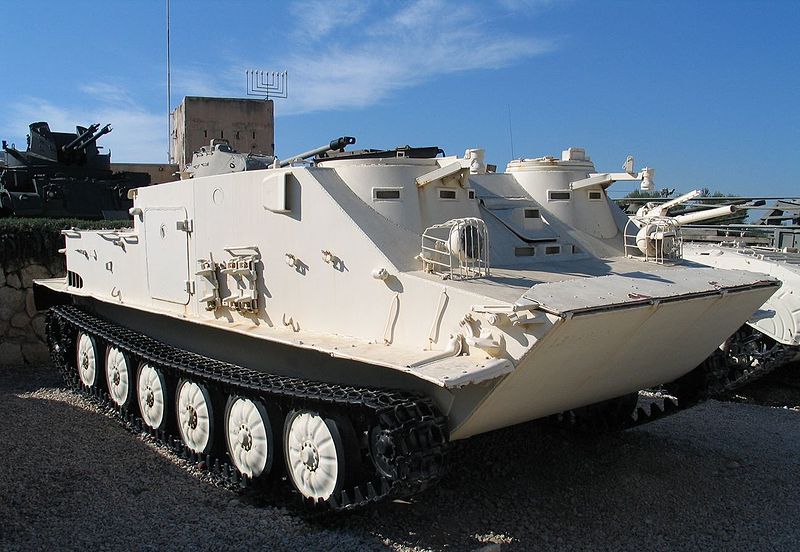
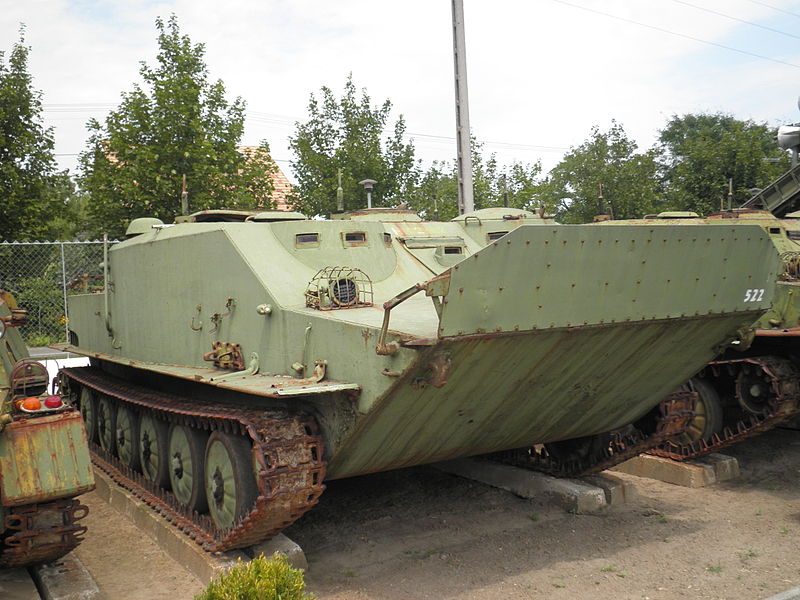
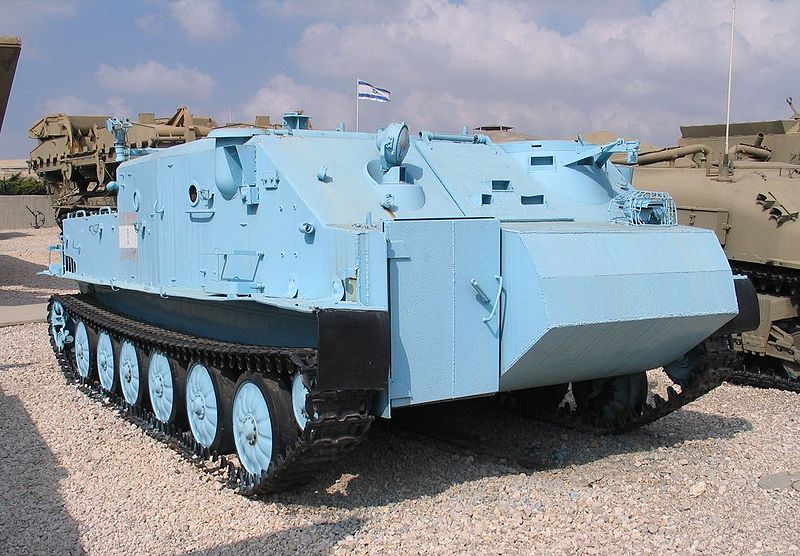
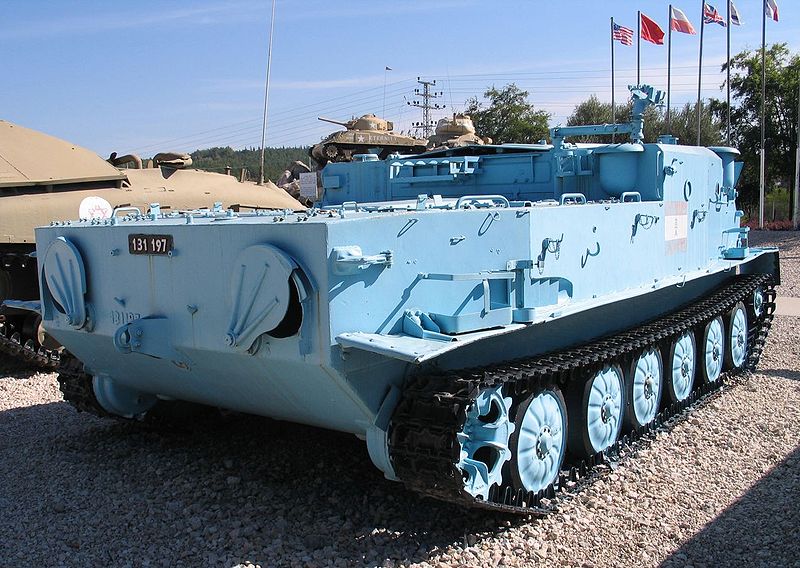
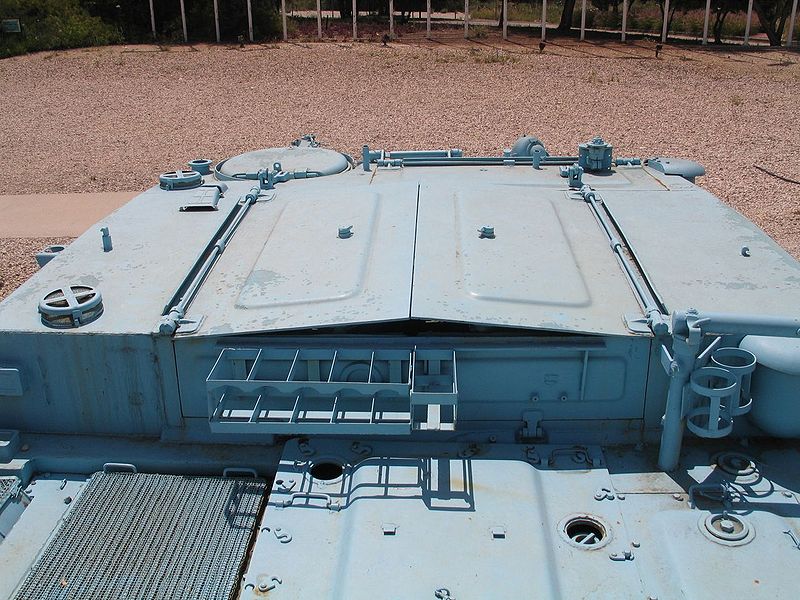
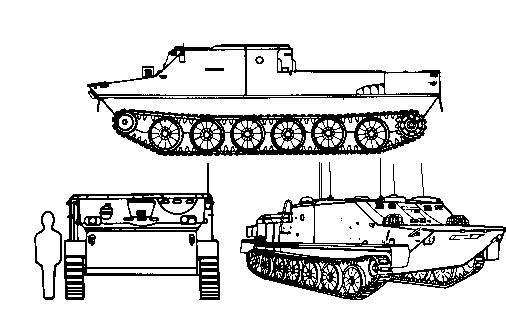
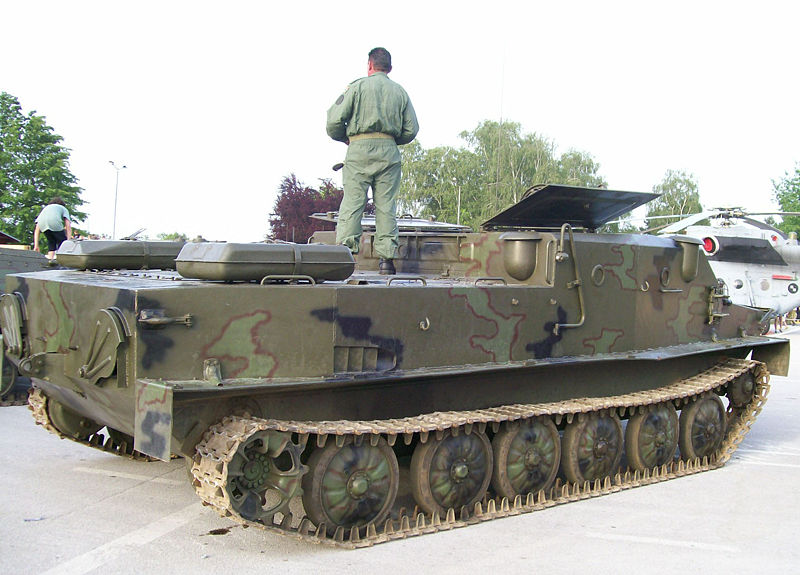
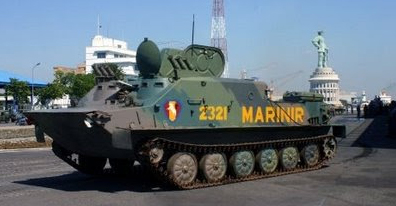

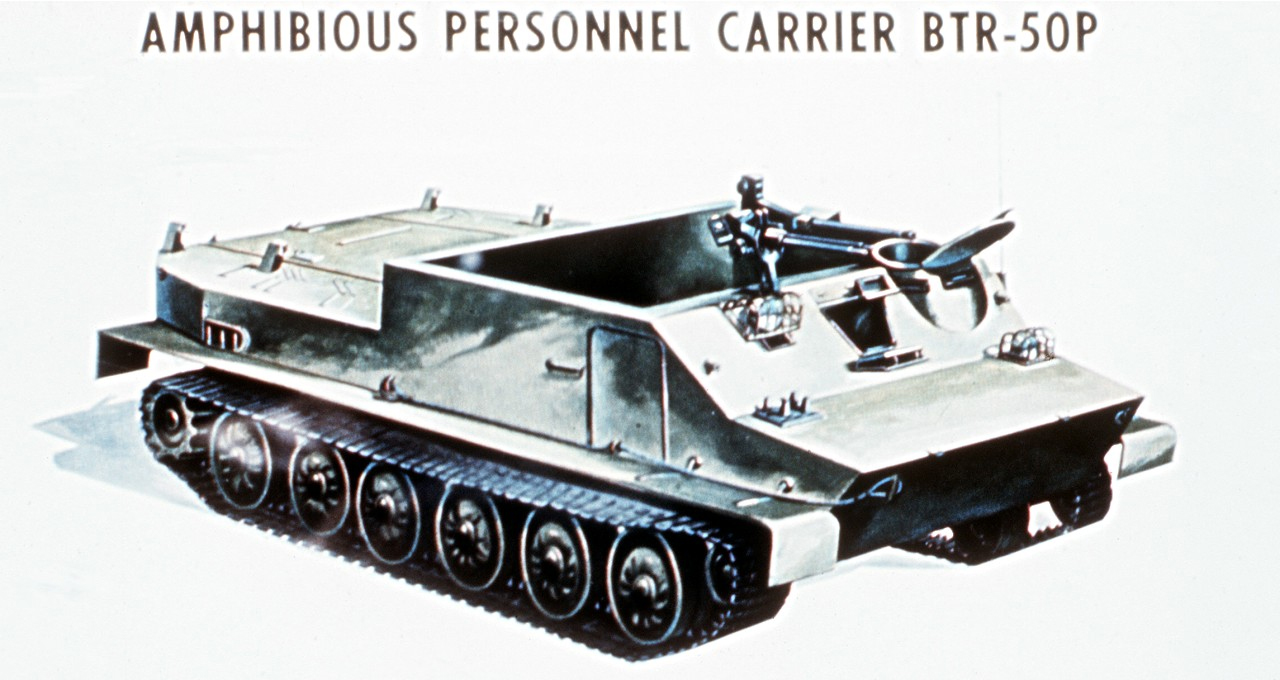
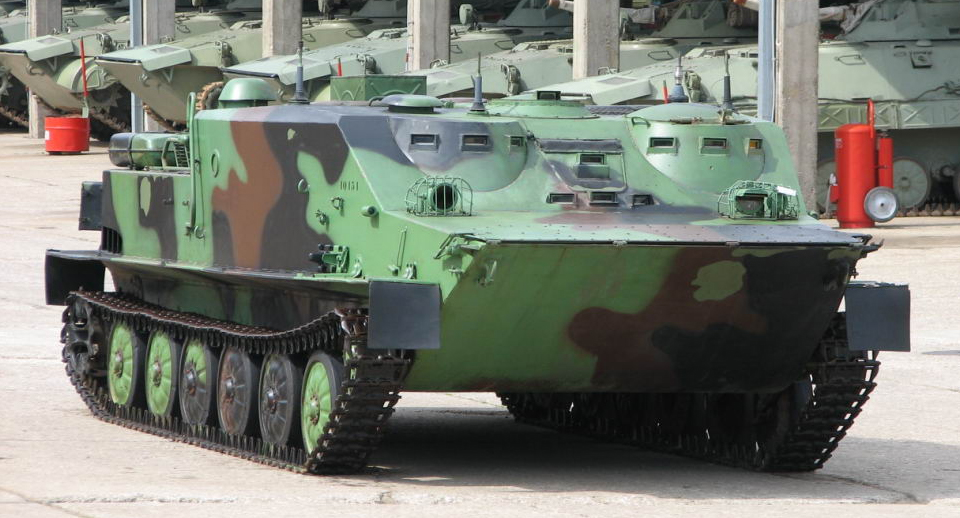
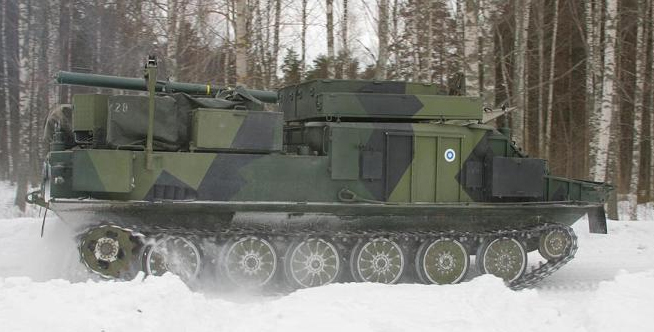
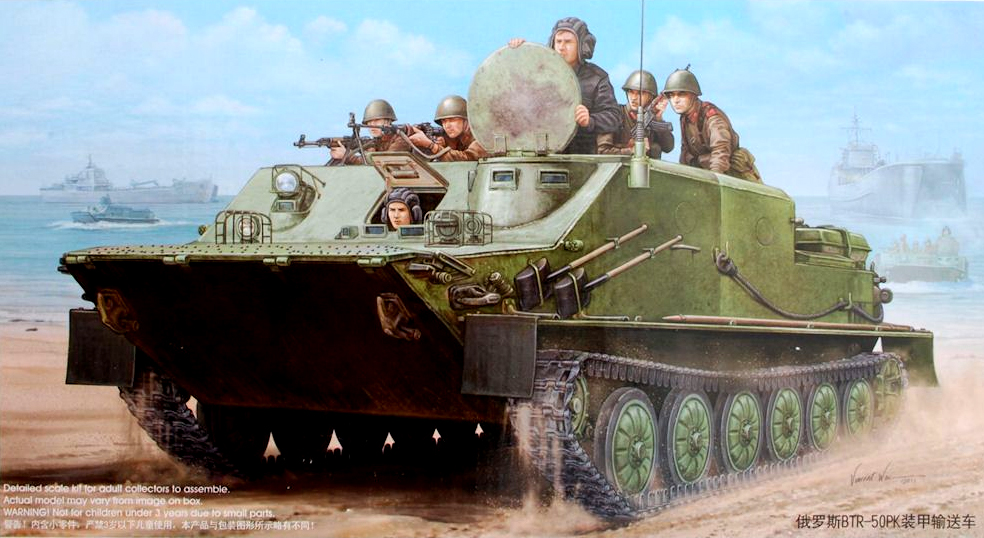
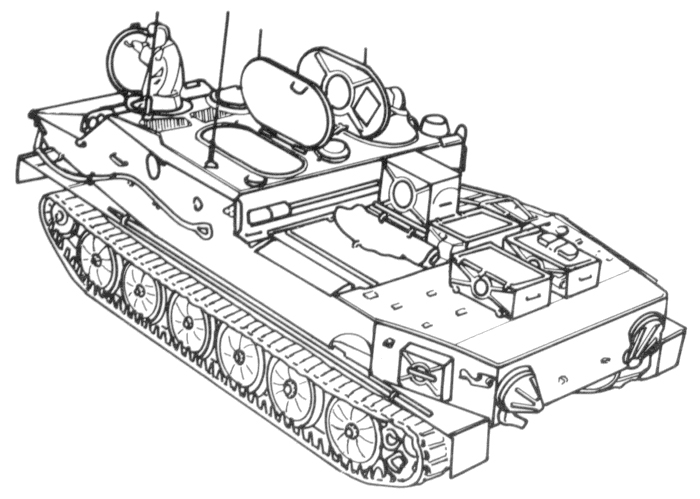
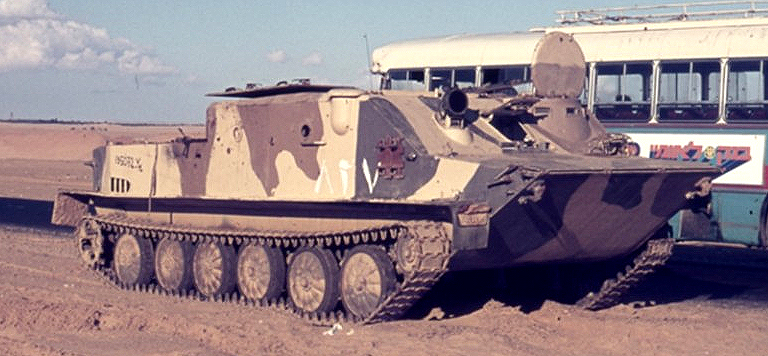
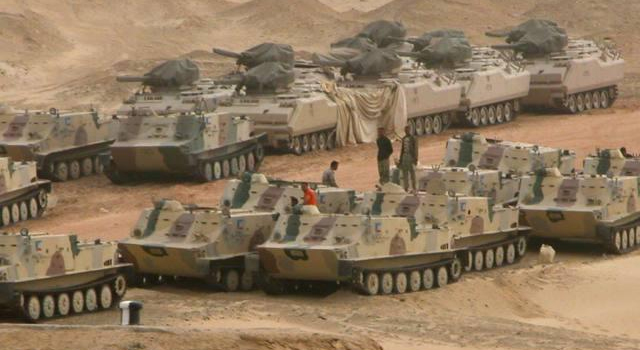
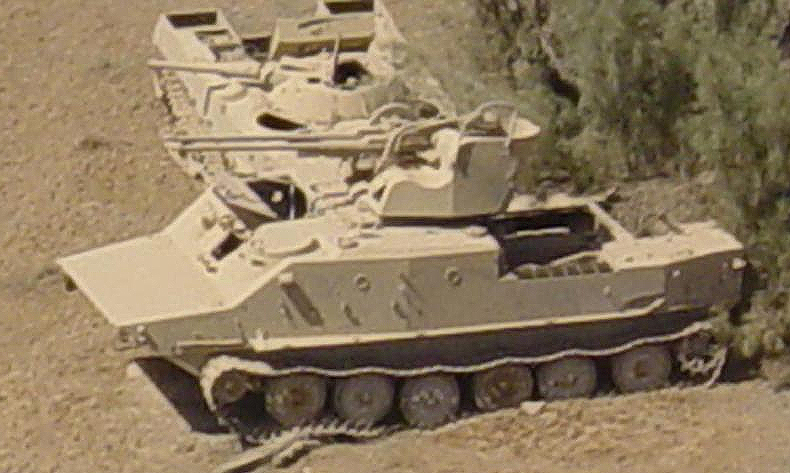

Cold War Tanks


































Cold war tanks posters

Cold War Main Battle Tanks

Cold War Soviet Army

